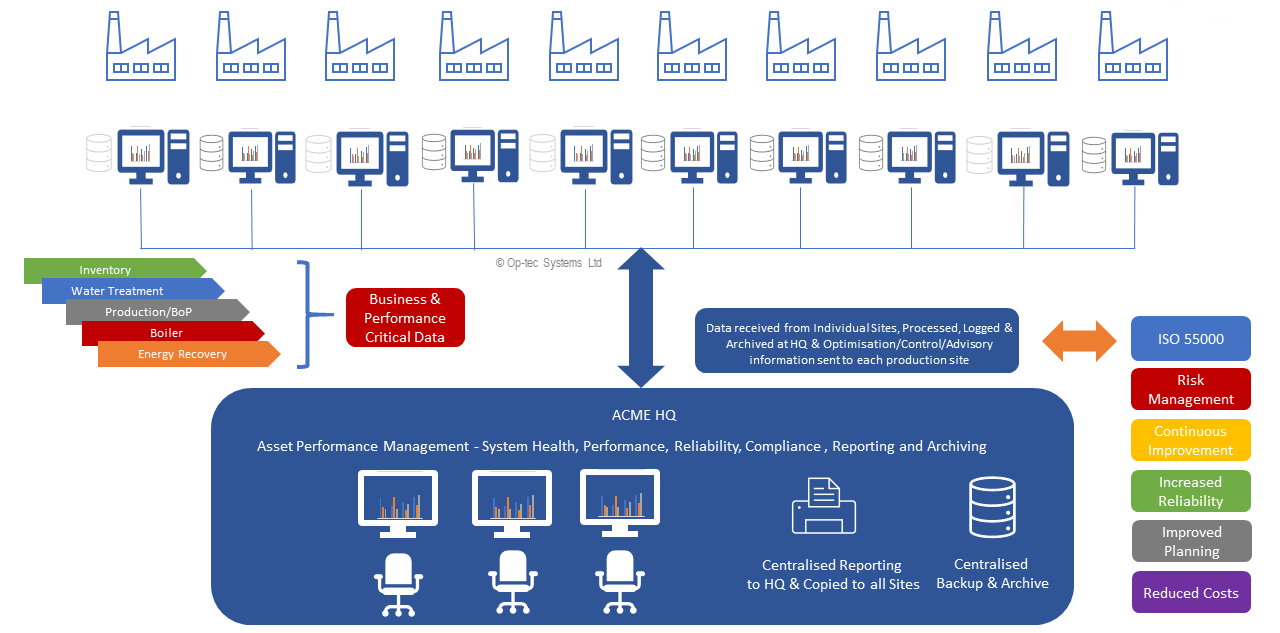We live in an ever more competitive age where increasing the capability of our assets is becoming more and more important. However, we rarely think in terms of how important the data that surrounds us is and how it can help improve our operations. Many well-known institutions and blue chip companies are effectively ‘Sleeping Giants’ when it comes to this issue. They find it difficult to recognise the importance of their data because the nature of their business hasn’t changed. Simply not considering themselves technology firms, they see established supply chains, tried and tested operating procedures, and fixed assets their competitive advantage.
So what separates less data centric companies from those happy to invest in technology who analyse every heartbeat of their operations?
The answer often lies in culture and the way manufacturing demand is perceived. All industries are subject to manufacturing and/or performance targets driven by the need to remain competitive. However, historically much of heavy industry has been less concerned with performance, whereas ‘lighter’ industries tend to think much more in terms of cost per unit. It’s more common to see certain industries focused on how costs are measured, how the manufacturing process runs and how all of this affects product manufacturing throughput and quality. The fact many lighter industries are also discrete manufacturing entities and subject to market ‘Pull’ conditions also tends to necessitate a ‘high efficiency’ mindset. Continuous and heavy industries seem more likely to succumb to “we’ve always done it this way” thinking.
That said, there are good and bad examples in all industries. Whichever way you look at it making improvements in your processes to save money can only be a good thing.
The real issue is a company’s vision and strategy and whether they include the improvement of its manufacturing processes, to both increase product manufacturing capacity and improve quality. Both are key factors which ultimately increase a company’s profitability and competitiveness, but require investment. These important issues are subject to specific standards regarding asset management, the most notable being ISO 5500x (i.e. ISO 55000, 55001 and 55002) which were derived from the BSI PSA 55 2014 standard. These standards advocate a systematic process for managing company assets which: increases reliability, reduces downtime, improves quality, reduces waste, increases customer satisfaction, and ultimately makes the company more competitive.
Investment… in our personal lives we are only too keen to invest when it provides a good return and ensures the roof doesn’t fall down. But at work one of the most common phrases remains “sweating the assets”, even if it seems to the detriment of efficiency and reliability. Surely this doesn’t make sense when for a fraction of the cost of the benefits the plant can be made to run more reliably and efficiently saving £££’s in the process?
“Sweating the assets” (also known as the ‘Breakdown strategy’, incidentally) will one day result in catastrophic failure, halting production completely. Companies following such a strategy would benefit enormously from adopting the ISO 55000 standard – unless closure of the plant is in the short-term plan.
ISO 55000 aligns a company’s objectives and goals with a method of ensuring they are implemented via a process of continuous improvement. Once adopted as company policy by senior management the system provides a vehicle and framework for improvement. Stakeholders will be reassured the company is proactively and systematically improving the business and ensuring its sustainability and profitability.
Getting back to the title of this article… a key concept is the ‘Hidden Plant’ and using data to uncover potential gains and enable you to measure the benefit of improvements. Once you’ve put in place a system for capturing and analysing your plant’s data you can make changes to your processes in alignment with your company’s objectives.
These systems enable predictive maintenance to be planned reducing preventative action which shuts down plant unnecessarily. Continuously monitoring the health of assets over time also shows their gradual degradation. This tells you the most economical time to replace equipment, avoiding it operating outside defined levels of performance or where the likelihood of catastrophic failure is too great.
In the vast majority of cases the essential data required to improve the running and performance of your plant is already in place. The issue is how to display this data in a way that is meaningful to the plant operations staff and what the cost of this is versus the benefits. So let’s look at how we can determine whether the investment needed to provide an Asset Management system outweighs the cost of the investment. Let’s take an example where the cost of an Asset Performance System is £30k and its lifetime is 10 years:
An average cost saving of £3k/year would justify the investment. For many production facilities, one single breakdown lasting as little as 30 minutes could cost as much as £30k. So if one half-hour unplanned outage is prevented the company recovers its initial investment. Additional benefits would also be the collation and visualisation of data at the company’s HQ where the monitoring of each manufacturing facility is carried out by performance personnel, thus likely enabling local staff to be redeployed resulting in further savings via increased efficiency. Add to this maintenance savings, increased predictability (and therefore quality) and longer asset life, and hopefully the benefits of Asset Management are clear to see.*
The figure below shows how a large number of plants can benefit from a single Asset Management System. Data is published by each site location and analysed centrally, with advisory or control information sent back ensuring each plant runs optimally and continuous improvement actions can be quickly implemented across the organisation.

Example of organisation-wide asset management system
If you’re interested to learn more about how automation technology can help you get more from your existing assets then understanding how your current situation compares to industry best practice is a good place to start. Click the button below to find out about how your bespoke Digital Benchmark Report™ provides you with this, and tailored recommended actions you can take to improve your company’s digital infrastructure.
Get your Digital Benchmark Report™
*This business case has been greatly simplified, ignoring the cost of capital among the many other factors which can influence investment decisions in organisations. If building business cases is an area you need help in, we are experienced in working with our clients to build robust and measurable project justifications.

